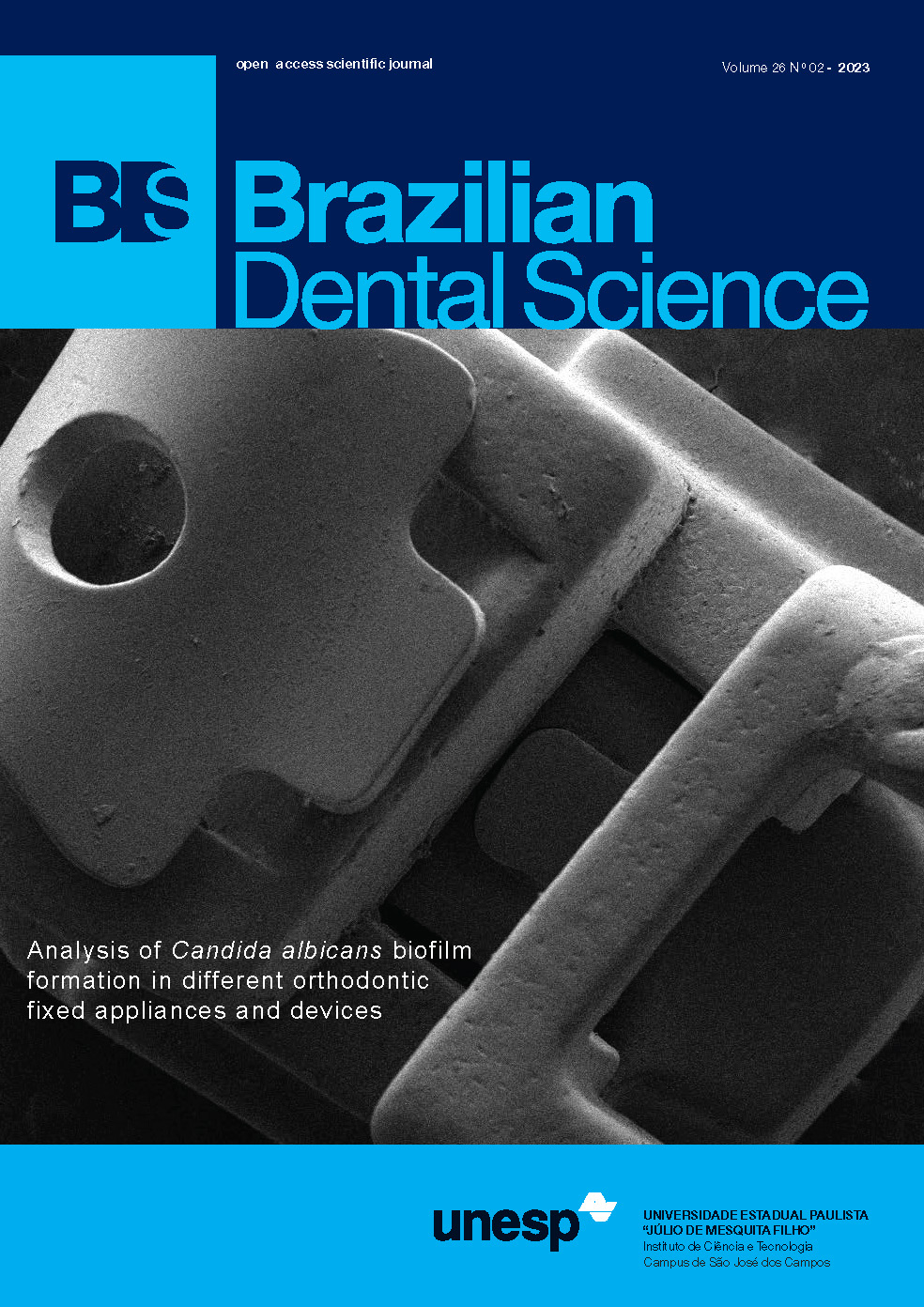Impact of maternal periodontal health on fetus weight in Iraqi pregnant women: a clinical study
DOI:
https://doi.org/10.4322/bds.2023.e3702Abstract
Objective: the aim of this study was to investigate the relationship between periodontal health condition and the weight of fetuses in Iraqi pregnant women in order to magnify the importance of periodontal health maintenance during pregnancy. Material and Methods: fetus weight was determined using ultrasound scanning for 222 pregnant women, accordingly they were divided into two groups: group A: normal fetus weight and group B: below normal fetal weight. Their periodontal condition was examined by means of Plaque index (PI), Gingival index (GI), Bleeding on probing (BOP) and Clinical Attachment loss (CAL) using WHO CPITN periodontal probe. WHO charts of normal fetal weight for each week were considered to determine the normality of fetus weight. Results: significant value p=0.00 was obtained when comparing the examined periodontal parameters between groups A and B, mean of periodontal parameters of PI, GI and BOP were higher in group B (1.1964: 1.4541), (1.1877: 1.4925), (0.3553: 1.3748) respectively. Q2 and IQR of PI, BOP and GI in group A were (1.190:0.3), (0.30:0.5), (1.160:0.3) respectively. And (1.460:0.24) (1.50:0.7) (1.460:0.26) in Group B. There were 4 cases of CAL in group A as opposed to 88 cases in group B, Q2 of CAL in group A=0.00, Q2 in group B=1.00. IQR=0.00 in both groups. Non-significant value p=0. 503(p>0.05) was seen when comparing the incidence of low fetal weight between the three trimesters. Conclusion: it is important to maintain a good periodontal condition and oral Hygiene status in pregnant women for healthier fetal weight and healthier pregnancy with less complications.
KEYWORDS
Oral hygiene; Risk factors; Pregnancy; Fetal weight; Periodontal disease.
Downloads
Published
How to Cite
Issue
Section
License
Brazilian Dental Science uses the Creative Commons (CC-BY 4.0) license, thus preserving the integrity of articles in an open access environment. The journal allows the author to retain publishing rights without restrictions.
=================




























